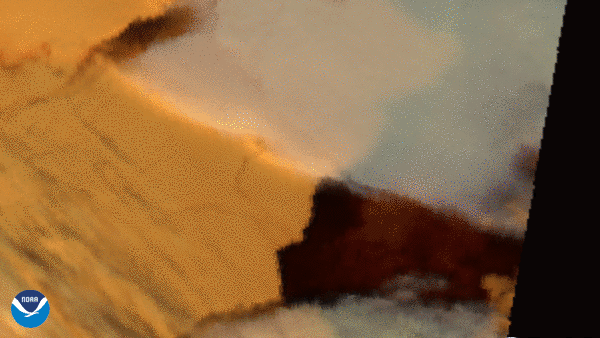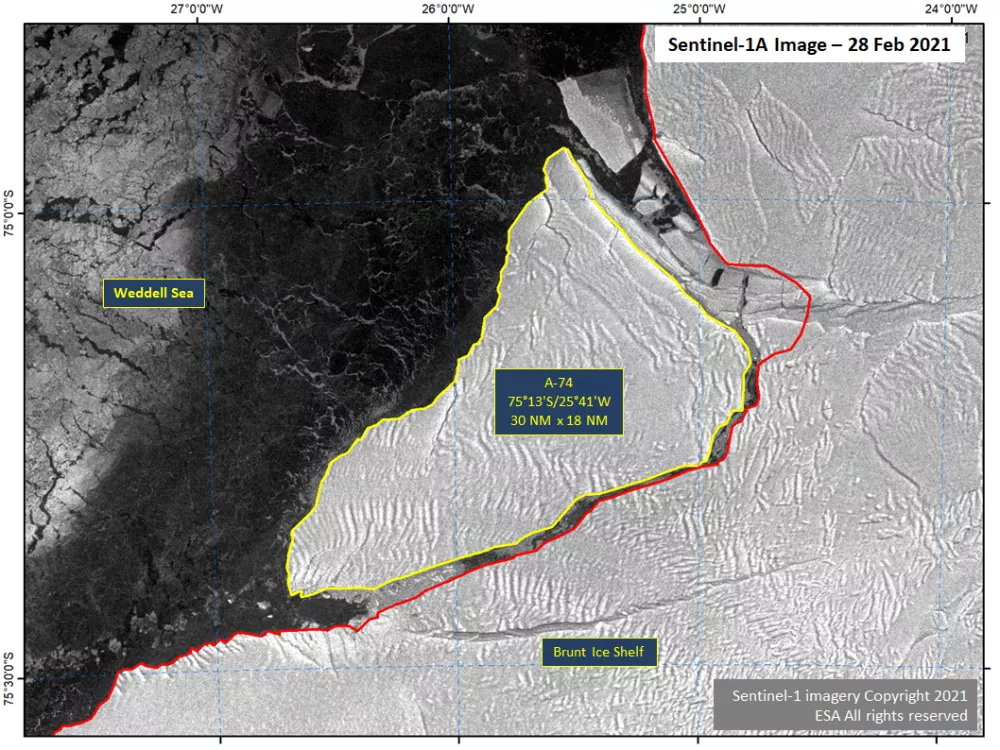
On Feb 26, 2021, the JPSS polar satellites watched a city-sized chunk of ice break off (calve) from the northern section of Antarctica’s Brunt Ice Shelf as seen by the Snow RGB product. The event was not unexpected, since researchers who have been monitoring cracks in the shelf noticed a new chasm, called North Rift, growing in November. The crack’s growth accelerated throughout January and February.
The U.S. National Ice Center has confirmed that this iceberg, named A-74, measures 30 nautical miles (34.5 miles) on its longest axis and 18 nautical miles (20.7 miles) on its widest axis. The total area is roughly 1,270 square kilometers (490 square miles), which is similar in size to the area covered by the city of Los Angeles.

Sentinel-1A image of A-74 , February 28, 2021 (Courtesy of ESA)
This was the third major crack to become active in the shelf within the last decade, according to the British Antarctic Survey. The ice sheet itself is around 150 meters (~500 feet thick) thick. But, as large as it is, this iceberg is still dwarfed by A-68A. One of the largest ever recorded, it recently almost collided with South Georgia Island.
The Joint Polar Satellite System (JPSS) is the Nation’s advanced series of polar-orbiting environmental satellites. JPSS represents significant technological and scientific advancements in observations used for severe weather prediction and environmental monitoring. These data are critical to the timeliness and accuracy of forecasts three to seven days in advance of a severe weather event. JPSS is a collaborative effort between NOAA and NASA.
